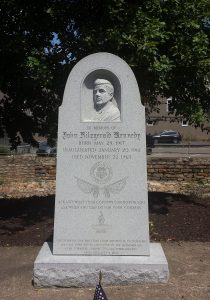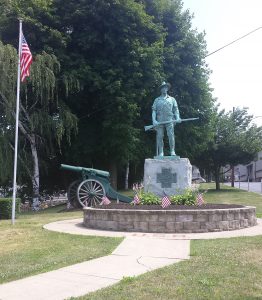As I begin another wonderful dive into the world of Digital Scholarship, I am incredibly happy to be working in part with the Digital Scholarship and Pedagogy department at Bucknell University as a summer research fellow. I was immediately intrigued with this research position because of my consistent work with digital projects and tools. The breadth of digital humanities is immense; projects can range from departments in the humanities, social sciences, natural sciences, etc. Also, considering digital humanities is becoming a more significant study, there are new developments and platforms for analysis that open up different research questions and interdisciplinary studies.

During the summer of 2016, I conducted research on my hometown, in the Pennsylvania Coal Region. Particularly, I was studying the cultural significances of Shamokin and Coal Township by analyzing ten monuments. As a result, I created an interactive map of the monuments using the geo-spatial plugin Neatline with all of my metadata saved on Omeka. Also, I have worked with the Coal Collections research team, recently investigating the various immigrant groups in the anthracite coal regions of Pennsylvania during the Spring 2017 semester.
I wanted to continue my research in the Coal Region and using monuments as a medium for uncovering historical trends and cultural values. However, for my project during the summer of 2017, I want to add new additional digital tools and expand my scope past Shamokin and Coal Township. Since my previous research is easily able to be added too, I have currently decided to investigate monuments in surrounding Coal Region towns: Mount Carmel, Ashland, Kulpmont, Minersville, Frackville, etc. However, I have to narrow my scope to specific towns, most likely, Minersville and Mount Carmel. Recently, I wrote an academic essay theorizing why Shamokin, notable for coal production, did not have any monuments to miners. Thus, I am looking for monuments to miners in other coal region towns and analyzing their perceptions of miners.

After analyzing other monuments in the Coal Region, I would like to investigate monuments dedicated to miners cross-culturally, if possible. I would like to research miners in Chile’s mining districts and how they are perceived and, if they are, memorialized by the citizens.
While researching monuments to miners, I want to incorporate other depiction of miners too. For example, paintings, poetry, and photography, that reveal the sentiments of community members, whether they were criticisms or romantic representations of coal miners.
(I think adding audio components of citizens from the Coal Region explaining how they view[ed] coal miners would be helpful too)
I am excited to begin learning more visualization techniques, especially Gephi and Google Fusion Tables. I would like to add to my map on Neatline, but I do not want to repeat my previous research. I hope to have informative data visualizations and display all the information in a coherent fashion through Scalar or digital story maps. I have really enjoyed all the meetings and work our facilitators have put into this fellowship and my colleagues advice. I am eager to begin this in-depth project, but I know I need to better define my research question and narrow my scope.
